Lees Ferry in Glen Canyon National Recreation Area is the put-in for epic rafting trips down the Colorado River into the Grand Canyon.
This scenic area has a great campground, fishing, and the opportunity to look for California Condors.
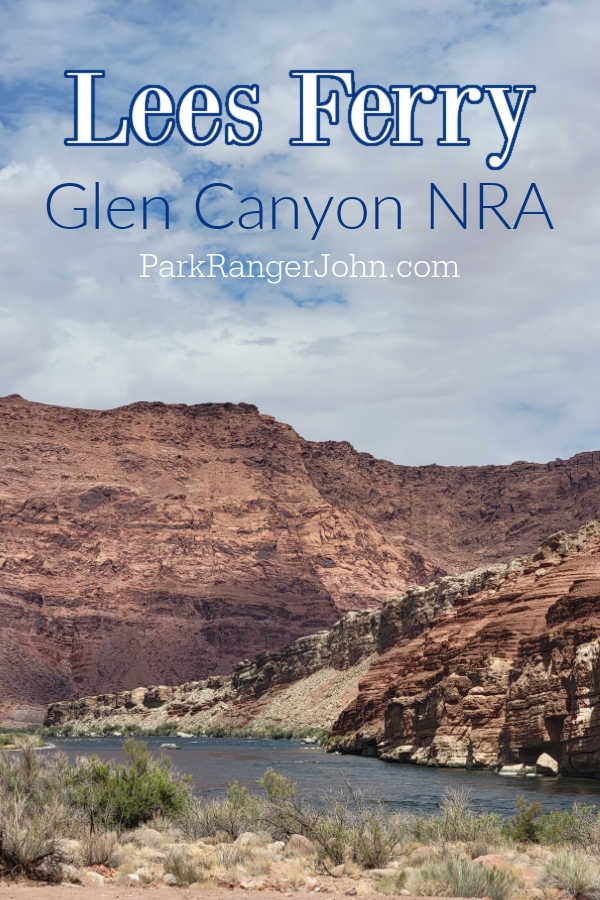
TL;DR Don’t have time to read the full article? Here are my top finds:
🏨Hotels and Vacation Rentals
📍Tours
🐻 Save time! Buy your National Park Pass before your trip
Lees Ferry - Glen Canyon National Recreation Area
Lees Ferry is the only place within Glen Canyon where visitors can drive to the Colorado River in over 700 miles of canyon country, right up to the first rapid in the Grand Canyon.
One of the really amazing things to see is the size of the rafts that are taken into the Grand Canyon. They are so much bigger than we really thought they were.
History of Lees Ferry
Lees Ferry, found within the Glen Canyon National Recreation Area protects and preserves the only place pioneers could safely cross the Colorado River for hundreds of miles. A ferry service was established at the point, which became known as Lees Ferry.
The crossing played a huge role in the settlement of northern Arizona, prompting the site to be dubbed the Grand Central Station of the Southwest. The site not only preserves the site of the ferry crossing but the ruins of Lees Fort and a log cabin known as Samatha’s cabin at the site of the historic Lonely Dell homestead.
Mormon Pioneers and Lees Ferry
In 1864, a Mormon pioneer by the name of Jacob Hamblin and the 15 men who accompanied him, successfully crossed the Colorado River for the first time. Hamblin and his men built a raft to transport themselves, their horses, and supplies across the Colorado River. The site became known as the Pahreah Crossing.
Hamblin and his men needed to cross the volatile Colorado River to reach the Navajo of northern Arizona. The men were to instruct the Navajo to stop the raids in Utah where they would steal livestock thus threatening Mormon Expansion.
Relations between the Mormons and the Native tribes who inhabited the territory the Mormons were settling were hostile. The raids increased with other native groups performing raids on Mormon settlements. To protect their settlements, the Mormons posted men to guard the crossing in the winter of 1869.
It was during this period that Hamblin made the crossing again, this time with Major John Wesley Powell, John D. Lee who was a Mormon leader and Mormon church President Brigham Young. The group was on their way to Pipe Springs.
John D. Lee was sent to set up a permanent ferry crossing at the site in 1870, which would become known as Lees Ferry.
Lees Ferry
John D. Lee’s posting in the remote area of Glen Canyon was not a coincidence. Lee had been excommunicated from the Mormon church for his involvement in the Mountain Meadows Massacre.
The incident took place in the southern Utah territory of Mountain Meadows between the 7th and 11th of September 1857. 120 immigrants from Arkansas traveling in the Baker–Fancher party were attacked by Mormons of the Utah Territorial Militia.
The settlers, many of whom were women and children, were on their way to California when they were attacked and murdered by the militia. John D. Lee was one of the commanders who ordered the attack.
Lee and the other commanders blamed the attack on the Native tribes living in the area. Sending Lee to set up a permanent ferry crossing on the Colorado River made sure Lee was out of sight from both law enforcement and other Mormons.
Lee moved two of his families (he had nineteen), to the site and built stone and wooden homes for them. Lee called his homestead, Lonely Dell because of how isolated it was. In addition to the ranch houses, Lee built a dam and irrigation system to supply his land with water.
The first ferry boat to be built at Lees Ferry was launched on January 11th, 1873, and was named the Colorado. Shortly after the Colorado was completed, wagons full of Mormon settlers began arriving at Lees Ferry, needing to cross the river to settle in Arizona.
Lees Fort
With the establishment of Lees Ferry, more people began to settle in Arizona, which the Navajo who lived in the region resented. Tensions between the Mormons and the Navajo increased to the point where the Mormons constructed a fort at Lees Ferry in 1874.
The fort was never attacked, and shortly after its construction, the stone building was converted into a trading post. After a brief period, Lees Fort was converted several times, becoming a residence, then a school, and a mess hall. The building is one of the few remaining buildings still standing in Lees Ferry, from the period known as the Great Mormon Migration.
What Happened to John D. Lee?
Lee and his family lived at Lonely Dell ranch and operated Lees Ferry for seven years before Lee's past caught up with him. In 1877 Lee was executed by firing squad for his involvement in the Mountain Meadows Massacre. Despite several other men being involved in the massacre, Lee was the only one held accountable.
What Happened to Lees Ferry?
After Lee's execution, one of Lee's wives, Emma, took control of the operation. Emma ran the ferry and farmed Lonely Dell homestead until 1879 when The Church of Jesus Christ of Latter-Day Saints bought the property from Emma for $3,000.
The Johnson family was then sent to operate the ferry. The plural families lived as Lonely Dell. The Johnsons were not the last Mormon family to live at Lonely Dell. The last family to occupy the homestead was the Ernett family. Today, people can visit the log cabin that was dubbed Samantha’s cabin.
Lonely Dell Ranch Historic Site
The Lonely Dell Ranch is located near the mouth of the Paria River. This ranch was home to the families who operated Lees Ferry.
There is a 1-mile self-guided walking tour of the orchard, log cabins, stone ranch house, and pioneer cemetery.
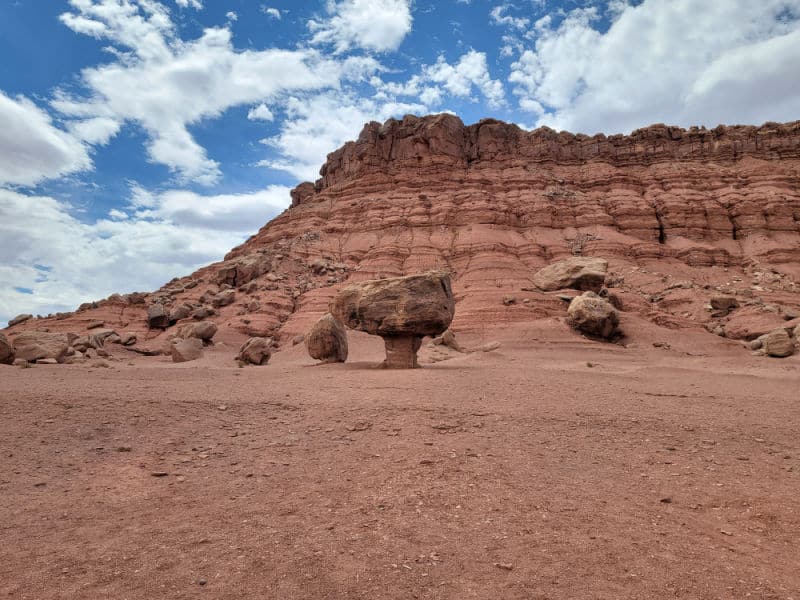
California Condors
We read that there are more wild condors in the Marble Canyon and Lees Ferry area than anywhere else in the world.
There are around 80 California Condors in the area out of the 400 that are in the wild!!!!
We sadly did not see a California Condor during our visit. I am pretty sure this means we need to return to Lees Ferry and the Navajo Bridge to see if we can see one.
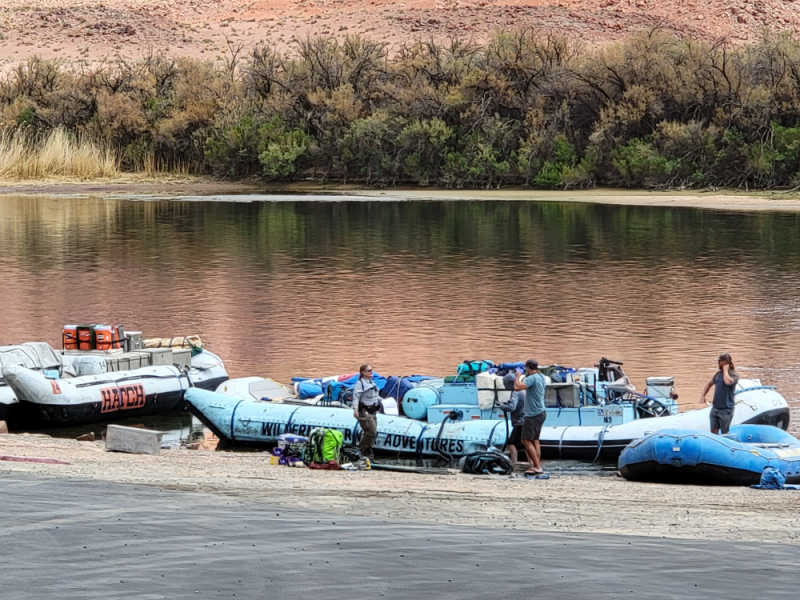
Boating
There are restrictions on certain types of vessels on the Colorado River. The river is too shallow for some boats, too cold for others, and too narrow for still more. It is incredibly important to read the boating guide from the park to know what is allowed.
Visit this list of authorized guided services to pick the fishing or kayaking guide for you.
Follow all boating laws for Arizona when boating on the Colorado River. Because of the nature of the river, there are additional restrictions for your safety.
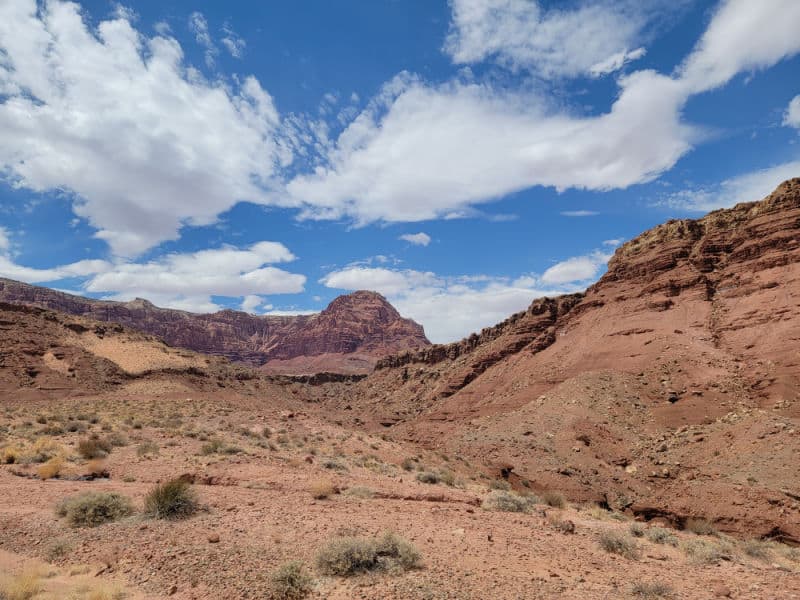
Hiking Trails
There are multiple hiking trails that leave from the Lee's Ferry area. Please make sure you are prepared with the ten essentials, have alerted people of the trails you are exploring, and know where you are going.
This is an area with extreme weather and other hazards.
Cathedral Wash
- 3 miles (4.8 km) round-trip
- Moderate
Trailhead: After you turn off Highway 89A onto the Lees Ferry access road, drive 1.3 miles. The trailhead is at the pull out on your left. You can access both upper and lower Cathedral Wash from this parking area.Description: As you descend into the rocky wash, you will travel through the Kaibab Limestone and Toroweap Formations of the Grand Canyon Group. Many interesting formations and fossils may be seen, along with plants and desert critters. As you reach the bottom of the wash, you will be awe struck by the beauty of the Colorado River. Some rock scrambling required.
Lonely Dell
- 1 mile (1.6 km) round-trip
- Easy
- Trailhead: Park by bridge over Paria River. Walk up gravel road closed to vehicles. Take a walk through the gate to the orchard, ranch, and cemetery beyond.
Paria Canyon
The entire canyon is 45 miles (72.4 km) one way. Take a day-trip into and out of the canyon as you see fit. Overnight hikes along the Paria River require a permit from the Bureau of Land Management.
Difficult
Trailhead: Trail ends at Lonely Dell Ranch
Description: Sandy wash and multiple river crossings
River Trail
2 miles (3.2 km) round-trip
Easy
Trailhead: Lees Ferry at launch ramp parking area
Description: Mix of gravel to rocky to sandy terrain that passes historic structure and hugs Colorado River
Spencer Trail
4.4 miles (7 km) round-trip
Difficult
Trailhead: Lees Ferry at launch ramp parking area. Divert from River Trail at posted junction.
Description: a 1,700-foot (518.2 m) rocky climb up switchbacks.
Glen Canyon National Recreation Area Tours
Glen Canyon Full Day Private Tour and Hike
⭐️ Rating: 5 out of 5 Stars | ⏳ Tour Length: 8 hours | 🥾Check Rates and Availability
This trip is tailored to you and your group, so we can make adjustments to the day based on your intrests. Spend the day adventuring around the geological wonders of the Glen Canyon National Recreation Area and learning about its unique ecology. You'll see Lake Powell, memorable red rock formations, slot canyons and more! Our guides will share stories of the parks human history as well as information about the flora and fauna.
Make sure to click here for more tours in the Page, Arizona Area.
Glen Canyon National Recreation Area Lodging Options
Lodges located in the Glean Canyon NRA Area include
Lake Powell Resort in Wahweap
This resort is just steps from Lake Powell with 2000 miles of shoreline to explore! They also have delicious scenic dining, a fantastic pool with epic views, boat rentals, and dinner cruises, too. The rooms are comfortable, have A/C free WIFI, a mini fridge and more!
Click here to book your stay at the Lake Powell Resort.
Defiance House Lodge in Bullfrog
Defiance House Lodge is located in Bullfrog, Utah, directly across from Lake Powell from the Halls Crossing Marina. This makes for the perfect accommodations for day trips on the lake. The rooms are comfortable with a nice restaurant on site. This is a perfect place for exploring the northern end of the lake!
Click here to book your stay at the Defiance House Lodge.
Lodging options near Glen Canyon NRA in Page, Arizona, include
Hyatt Place Page Lake Powell
This is a beautiful newer hotel with a great restaurant and bar, nice pool, breakfast buffet, free WIFI, and more!
Click here to book your stay at Hyatt Place Lake Powell
Hampton Inn & Suites Page - Lake Powell
Located close to all the natural wonders, includes a free hot breakfast, free parking, free WIFI, non-smoking rooms, fitness center, indoor pool and pet friendly!
Click here to book your stay at Hampton Inn & Suites Page - Lake Powell
Click on the map below to see current rates for hotels and vacation rentals in Page, Arizona.
Lees Ferry Campground
The campground offers amazing views of the Colorado River. All sites within the campground are first come first served so you will want to be there early enough to get a site.
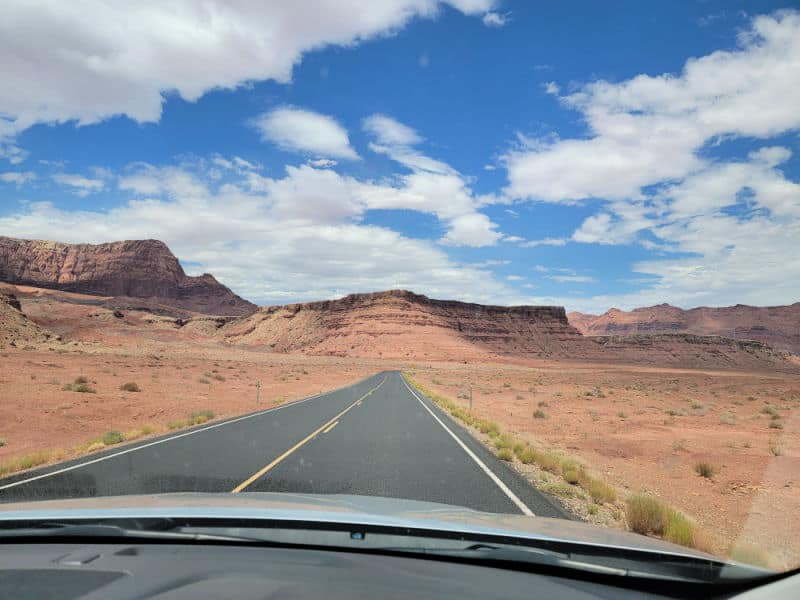
Getting to Lees Ferry
Lees Ferry is 42 miles (61 km) from Page via Hwy 89 south and Hwy 89A west. It is 85 miles (125 km) from the North Rim of the Grand Canyon via Hwy 89A and Hwy 67. The Lees Ferry Junction and Park Entrance is in Marble Canyon, just west of Navajo Bridge Interpretive Center. A paved road leads 5 miles (8 km) to the Ferry area.
Services available at Lees Ferry include a National Park Service campground, dump station, and public launch ramp. There is a gas station, store, and post office at Marble Canyon, next to the park entrance. More services are found west on Hwy 89A.
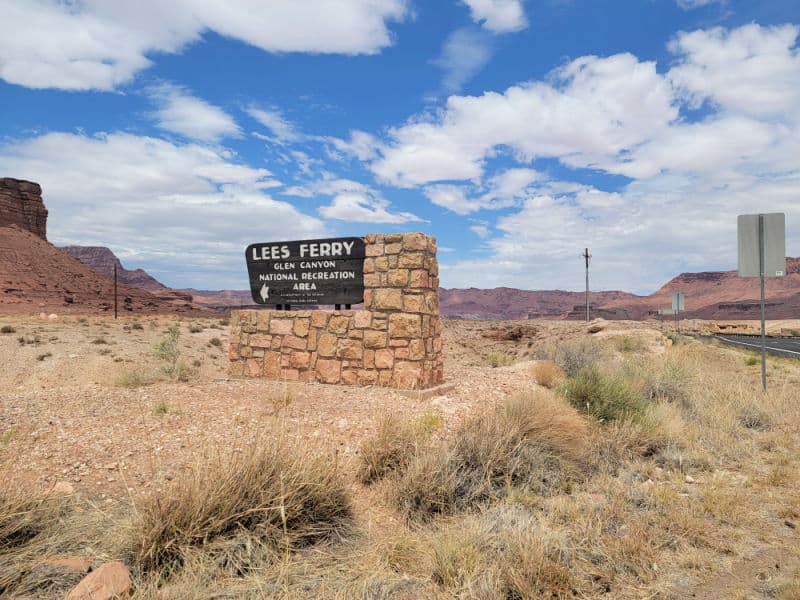
Additional Park Resources
Lake Powell
Glen Canyon Dam
Vermilion Cliff National Monument
Horseshoe Bend
Check out all of the Arizona National Parks you can visit. Don't miss the amazing parks in neighboring New Mexico National Parks and National Parks in California.
Make sure to follow Park Ranger John on Facebook, Instagram, Pinterest, and TikTok

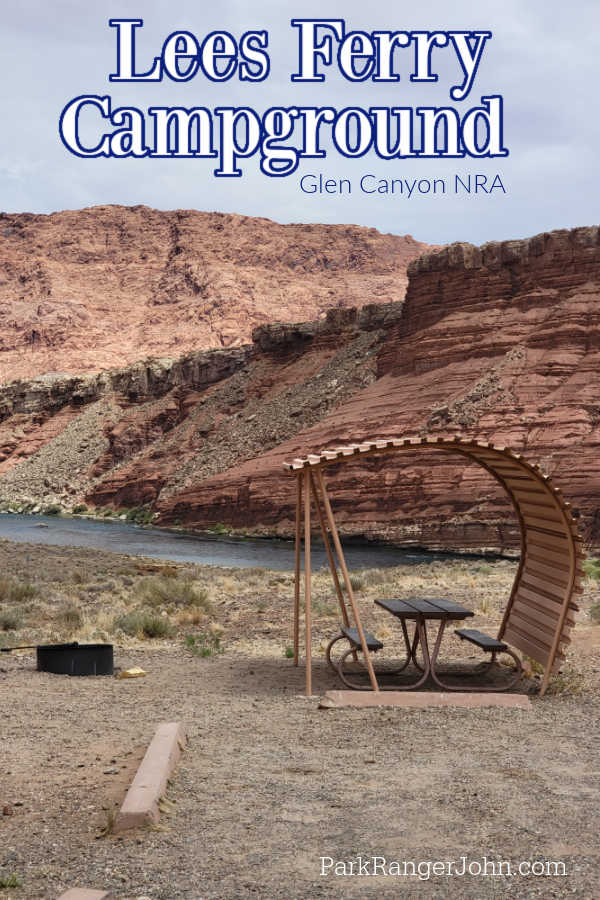
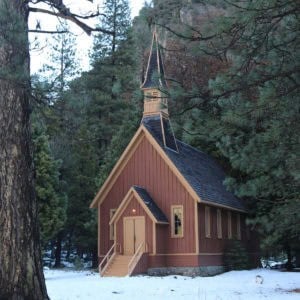
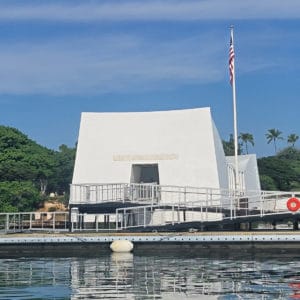
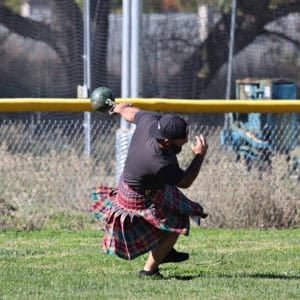

Leave a Reply